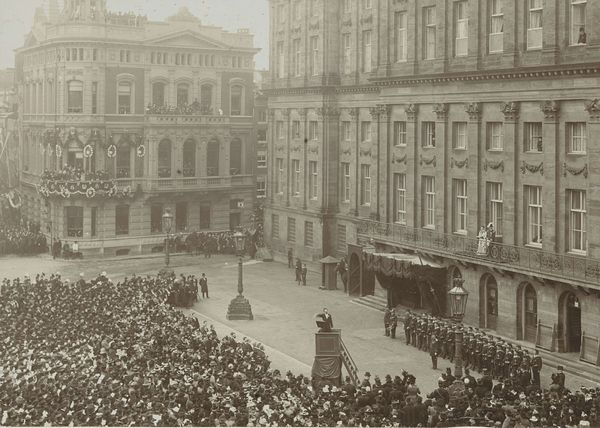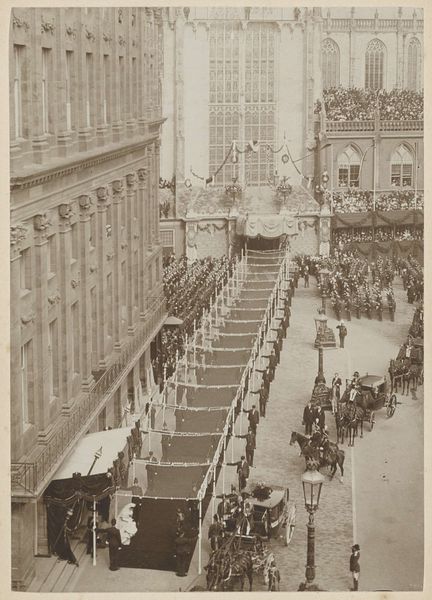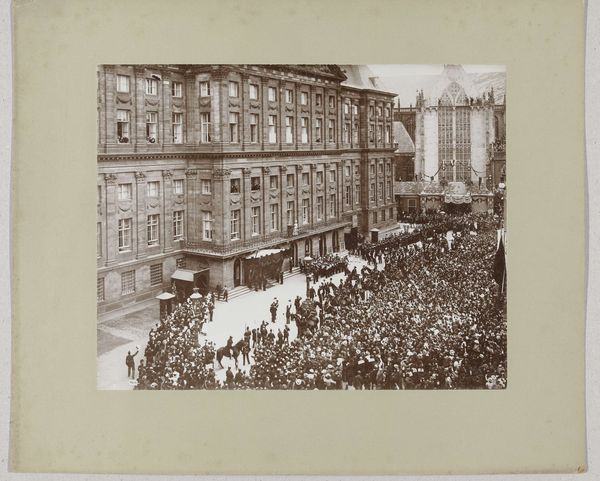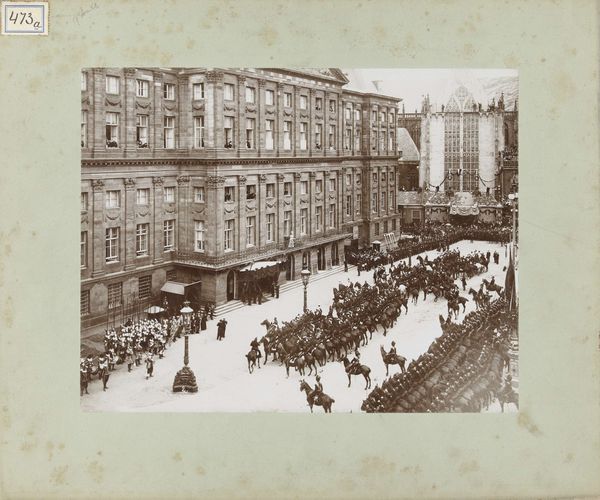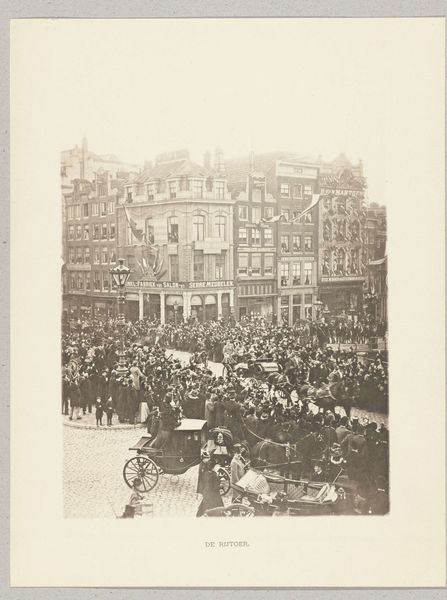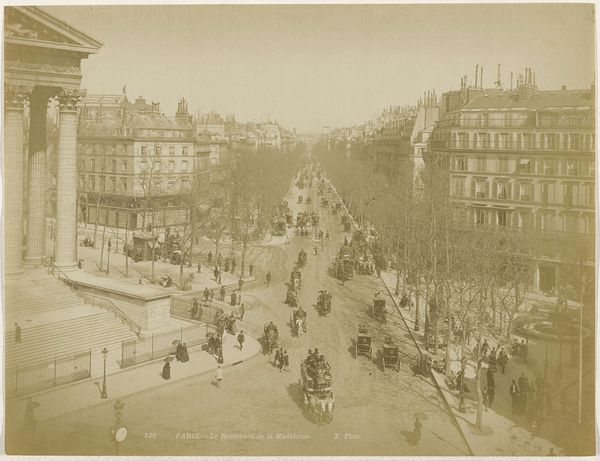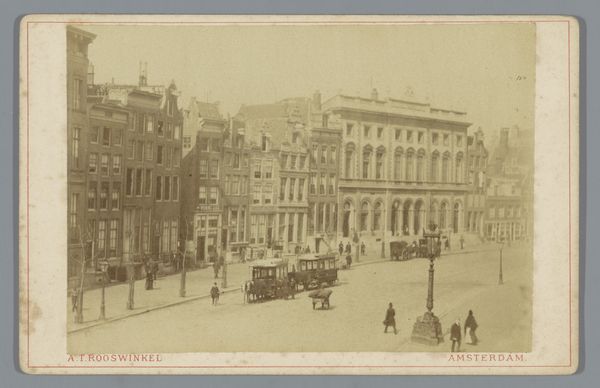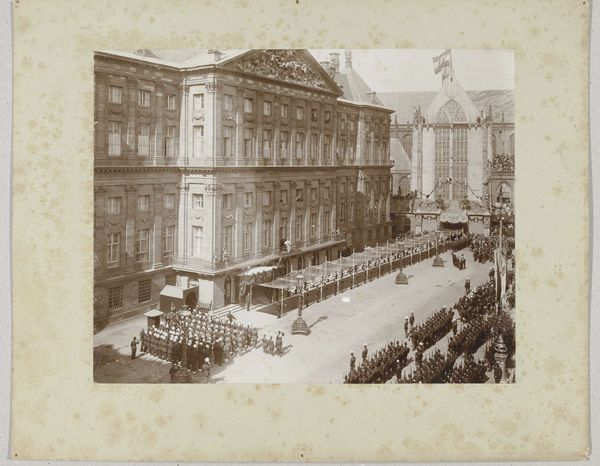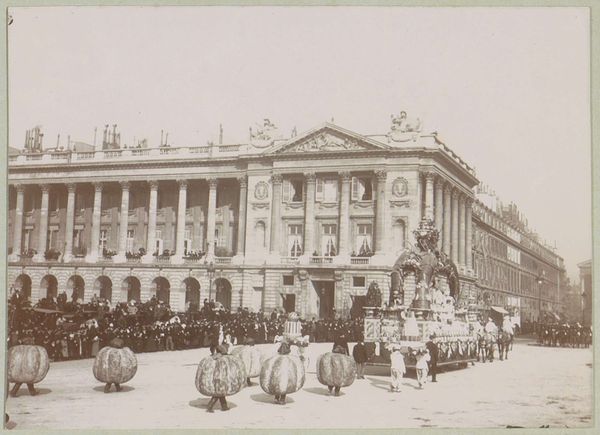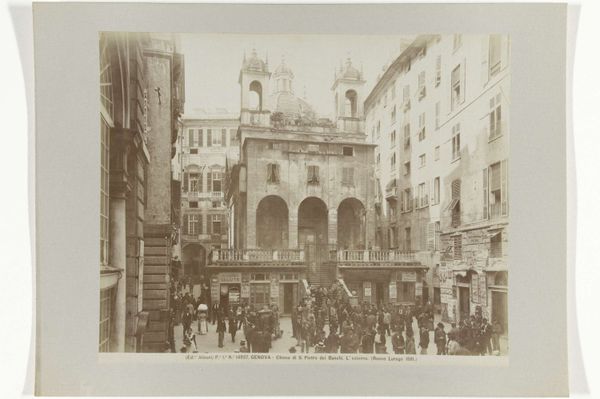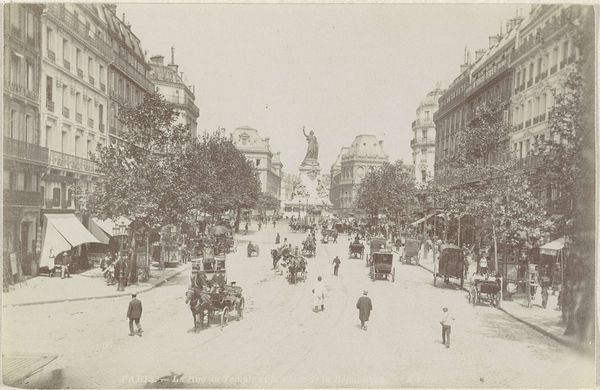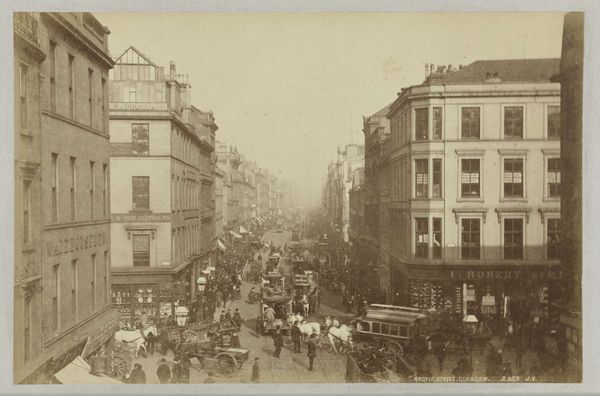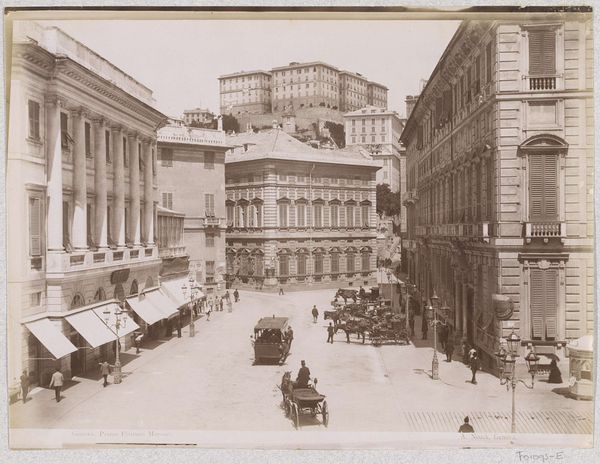
Willem III, koning der Nederlanden, Emma, koningin-regentes der Nederlanden, en Wilhelmina, koningin der Nederlanden, op het balkon van het Koninklijk Paleis op de Dam bij hun bezoek aan Amsterdam op 12 april 1887 Possibly 1887
0:00
0:00
#
architectural sketch
#
landscape illustration sketch
#
amateur sketch
#
light pencil work
#
quirky sketch
#
pencil sketch
#
incomplete sketchy
#
etching
#
architectural drawing
#
architecture drawing
Dimensions: height 225 mm, width 185 mm
Copyright: Rijks Museum: Open Domain
Curator: This is a photograph, quite possibly from 1887, depicting Willem III, Queen Emma, and the young Wilhelmina on the balcony of the Royal Palace in Amsterdam. The artist is Henri de Louw, and the photograph is part of the Rijksmuseum collection. Editor: There's an immediate feeling of grandeur but also of distance, wouldn’t you say? A formal occasion captured with a lens that somehow keeps you on the outside looking in. Like peering into history through a keyhole. Curator: Precisely! Consider the labor involved. The photographer setting up the bulky equipment, the chemistry needed for development…the socio-economic conditions allowing for such a grand spectacle, and its subsequent memorialization via photography that then would be consumed by the public. This visit to Amsterdam would’ve meant specific infrastructure had to be available, so photography and these kinds of royal gatherings became tools for public messaging in the process. Editor: It almost feels like a stage, with the royals up there on the balcony like players in a theatre of power, while below, the audience…or subjects… pack the square. Do you think De Louw knew he was capturing this very distinct division so well? It’s the artist's quiet way to portray this, using sepia to unify every social segment. Curator: It's plausible that De Louw understood that the photographic medium itself contributes to the construction of power, of reinforcing social hierarchies via spectacle. But also that the wide dissemination of pictures would lead to discussions on consumerism around important celebrations or official portraiture that defined the access people had. Editor: So interesting to ponder the artist’s point of view at the very start of photographical democratization. When every photograph still carried so much weight, so much possibility… so many questions, like the ones we ask ourselves looking at it today! Curator: Exactly. And considering how photography democratized imagery, yet was still a commercial activity deeply rooted in class and social structure... Editor: Absolutely! This photo is a stark reminder of all the labor involved to get what it appears to be like such an effortless capturing of history. It truly blends power, commercial interests, artistry and representation of labour, doesn’t it?
Comments
No comments
Be the first to comment and join the conversation on the ultimate creative platform.
